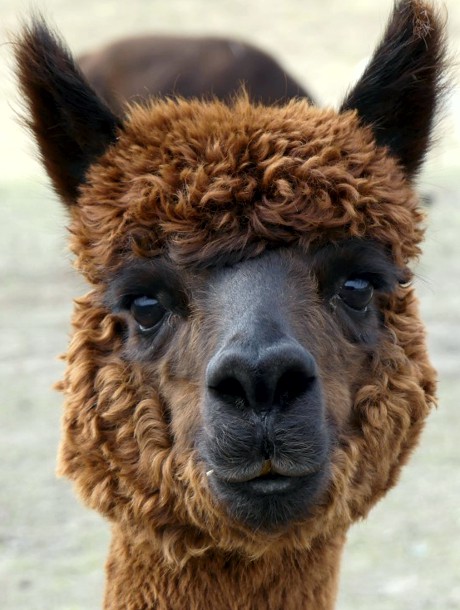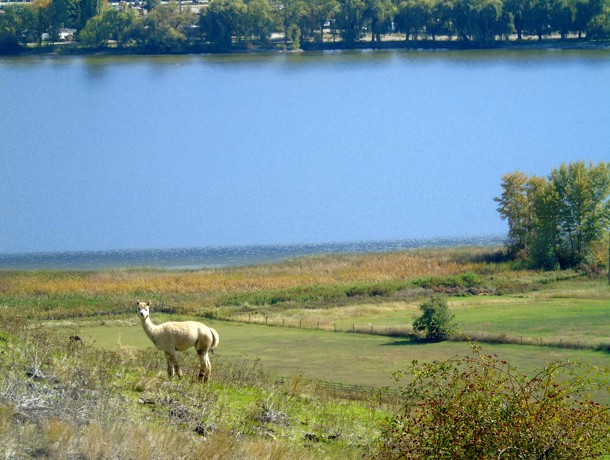Breed-up Program
There has been some discussion recently amongst the membership regarding the amendment to our by-laws that implemented a breed-up program. The breeding-up program refers to the sequential use of purebred animals with grade animals (animals not eligible to be registered with the CLAA) over a series of generations to provide a "nearly purebred" result. The first generation offspring will be eligible for 50% Purebred status, the second 75% and so on until the offspring reach 15/16th or officially, Purebred status.
This program was advertised as allowing breeders of CLAA registered stock to introduce "new genetics" into the Canadian llama and alpaca herd. While there is little doubt that many countries have animals that could contribute in a positive way to our own herd - whether it be through fibre, conformation or other specific, objectively measured data - the term "new genetics" is in many ways inaccurate. A genetic study of our herd has never been conducted but it is likely that at the time of our registry closure all the genes necessary to produce "the ideal" alpaca or llama were present in our population at least at some level of frequency. Any well planned breeding program seeks to increase the frequency of those genes amongst the population that are responsible for producing the traits that will give us this "ideal" animal. With careful selection and patience it is probable that we can produce such an animal(s) from within our existing Canadian herd.
The superior stock is produced by selecting animals for use in our breeding program that have shown the ability to consistently produce these desirable qualities and cull those that we think carry less productive genes. In other words we select for animals that breed true for those qualities that we want. If we rigorously apply this principle in our breeding program and in our current closed system it will by its nature lead to a narrowing of the gene pool. This happens because we are not selecting for genetic diversity - we are selecting to increase the frequency of desirable genes and are ultimately only using those animals that have shown, through the performance of their progeny, to posses these genes. Such programs lead to rapid genetic progress but they also can lead to the accumulation of inbreeding via heavy use of a few selected individuals or lines. Inbreeding is therefore primarily a function of selection intensity rather than the populations' size and can result in the phenomena known as inbreeding depression. This can lead to economic losses in production, growth, health and fertility. While this is not likely to be a problem in Canada right now and probably not for quite some there are several breeders at the higher end of the industry who are concerned about their breeding options for the future. This is especially true for those breeding for specific traits, such as colour or extreme fineness.
To counter this possible heavy use of a few select individuals, long term maintenance of some genetic diversity is required and there are several methods that can be used to achieve this. One is pedigree recognition and another method is a breed-up or grading up program. A program such as this allows Canadians to access animals from other nations. They are recorded in our databanks and the progeny are eligible for registration and some level of purebred status.
However, as with any livestock industry there are no shortcuts to breeding superior stock although the use of the breed-up program can hasten it to some degree. But, the process of Canadian herd genetic improvement will only be quickened if animals from a known genetic background are used such that we know those animals being recorded in the breed-up program are consistently producing progeny with the performance criteria that we want. The proper use of the breeding-up program is to take advantage of the pedigree data other nations have and import only those animals that have proved to be successful in producing the traits we desire. The importation of what are commonly referred to as "genetic black boxes" -animals with no certifiable pedigree or performance history - is a far, far less guaranteed path to success. It should be noted though that this breed-up program does not prevent the possible importation of animals from any nation in the world. The importation of animals into Canada from some countries though, is strictly controlled by import protocols.
This program though, is not registry recognition and therefore any animal that may be imported into the program cannot be registered with the CLAA, regardless of country of origin. The animal must conform to the CLAA breed standards, both dam and sire must be of the same breed and all known ancestors must be of the same breed.
The program is summarised in our by laws as follows:
(7) Breeding Up: Alpacas may be registered as Percentage Purebred which have less than 15/16 inheritance provided that all known ancestors are of the same breed, and the subject alpaca has a minimum purebred inheritance of 50% and that:
- For those alpacas conceived after the approval of this amendment (April 28, 2010), by the Minister of Agriculture and Agri-food Canada, a minimum purebred inheritance of 50% shall mean that one parent is registered with the Association as Foundation stock or Purebred and the other parent is recorded with the Association as 0%.
- Alpacas not eligible for registration in the herd book of the Association, may be recorded with the Association at 0% and used in the breed up program provided the applicant, when applying to record the 0% alpaca shall provide a DNA profile for the purpose of parent verification requirements. The application must also declare that the parents are of the same breed.
- The offspring from two registered Percentage Purebred parents may be registered as Percentage Purebred at the level equal to the lower of the two percentage parents.
- The offspring of a Percentage Purebred and a Foundation Stock or Purebred parent may be registered with the categories and certification levels as indicated in the table below.
- Alpacas will not be eligible to enter the breed up program if the applicant or the Association is aware of any congenital defects in the alpaca, or in any of its ancestors.


